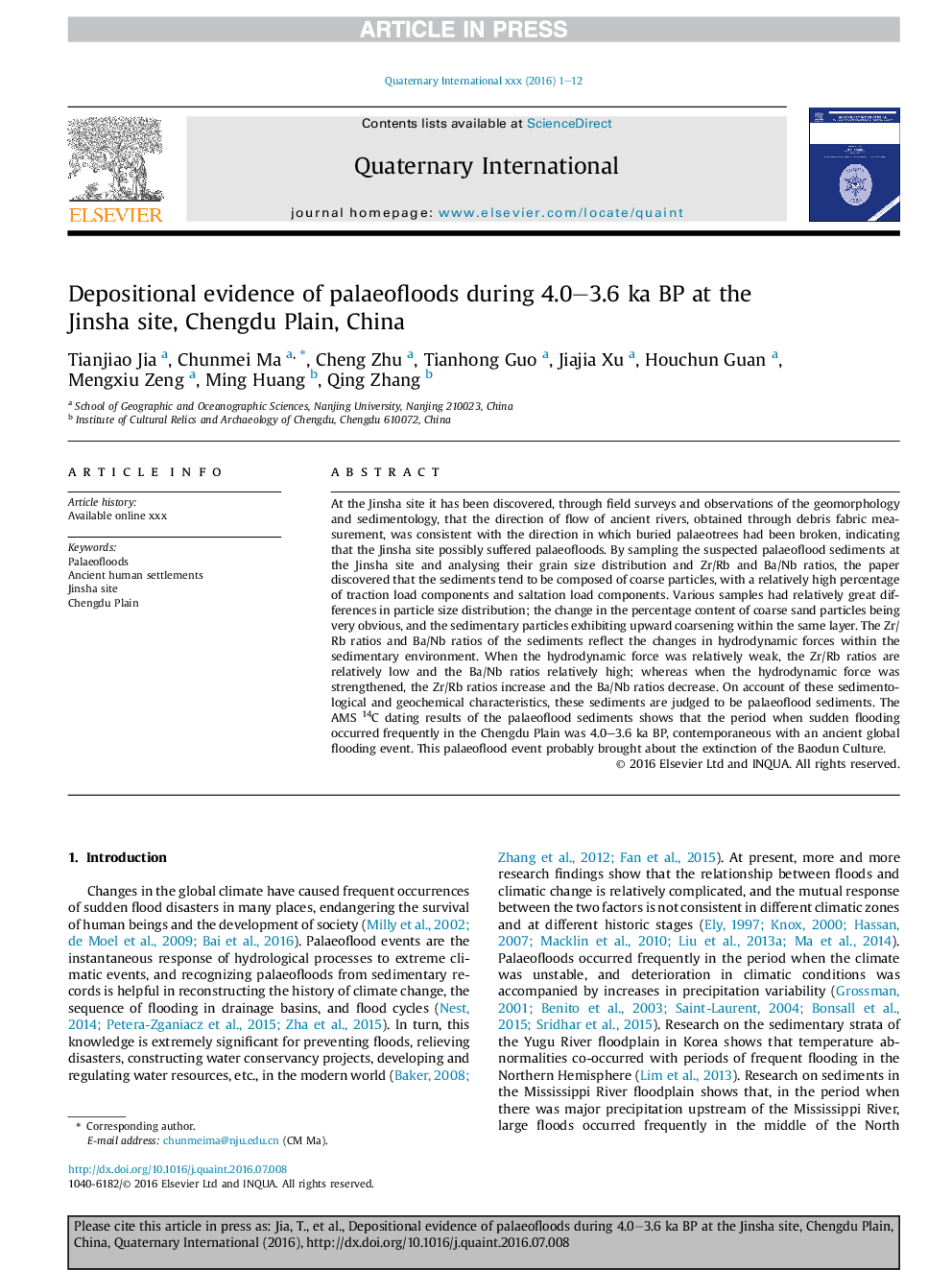| Article ID | Journal | Published Year | Pages | File Type |
|---|---|---|---|---|
| 5113082 | Quaternary International | 2017 | 12 Pages |
Abstract
At the Jinsha site it has been discovered, through field surveys and observations of the geomorphology and sedimentology, that the direction of flow of ancient rivers, obtained through debris fabric measurement, was consistent with the direction in which buried palaeotrees had been broken, indicating that the Jinsha site possibly suffered palaeofloods. By sampling the suspected palaeoflood sediments at the Jinsha site and analysing their grain size distribution and Zr/Rb and Ba/Nb ratios, the paper discovered that the sediments tend to be composed of coarse particles, with a relatively high percentage of traction load components and saltation load components. Various samples had relatively great differences in particle size distribution; the change in the percentage content of coarse sand particles being very obvious, and the sedimentary particles exhibiting upward coarsening within the same layer. The Zr/Rb ratios and Ba/Nb ratios of the sediments reflect the changes in hydrodynamic forces within the sedimentary environment. When the hydrodynamic force was relatively weak, the Zr/Rb ratios are relatively low and the Ba/Nb ratios relatively high; whereas when the hydrodynamic force was strengthened, the Zr/Rb ratios increase and the Ba/Nb ratios decrease. On account of these sedimentological and geochemical characteristics, these sediments are judged to be palaeoflood sediments. The AMS 14C dating results of the palaeoflood sediments shows that the period when sudden flooding occurred frequently in the Chengdu Plain was 4.0-3.6Â ka BP, contemporaneous with an ancient global flooding event. This palaeoflood event probably brought about the extinction of the Baodun Culture.
Keywords
Related Topics
Physical Sciences and Engineering
Earth and Planetary Sciences
Geology
Authors
Tianjiao Jia, Chunmei Ma, Cheng Zhu, Tianhong Guo, Jiajia Xu, Houchun Guan, Mengxiu Zeng, Ming Huang, Qing Zhang,
